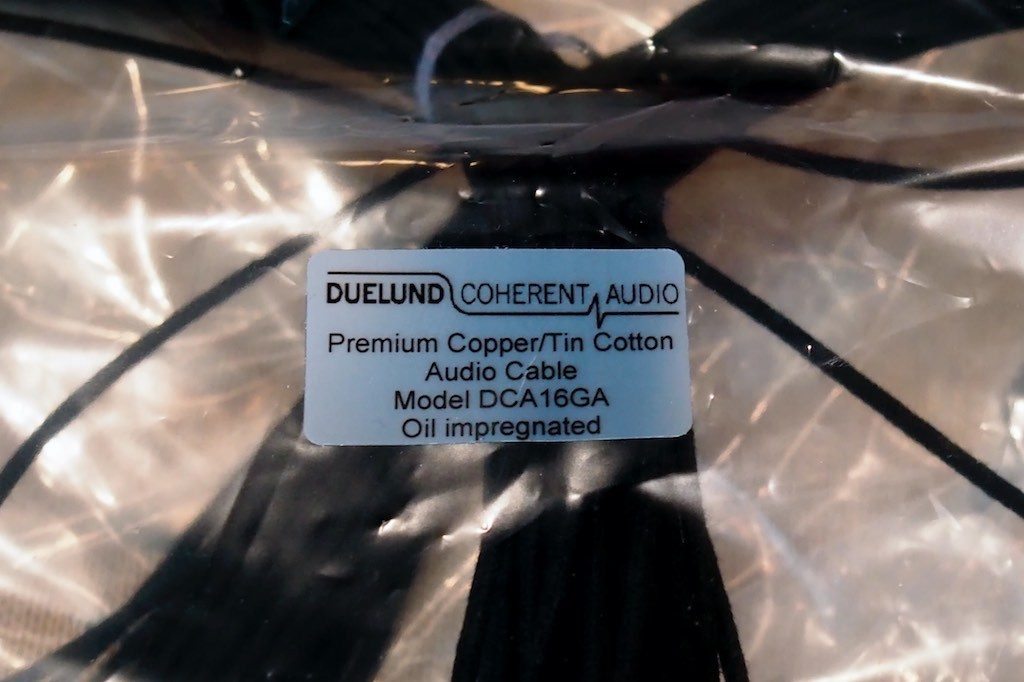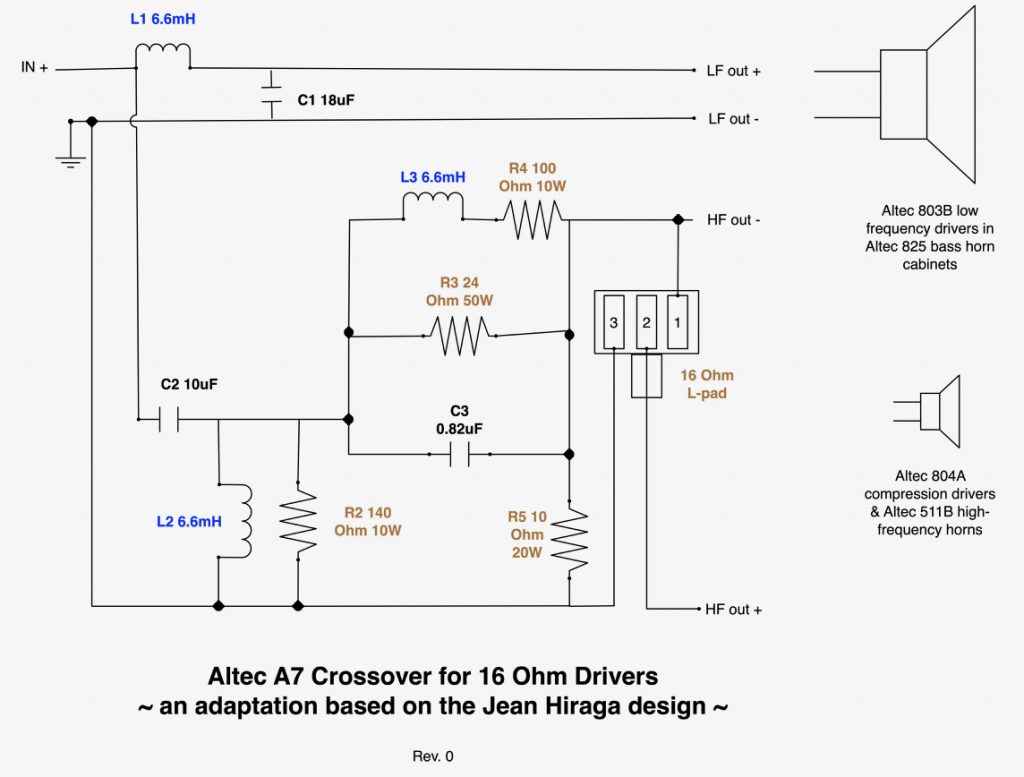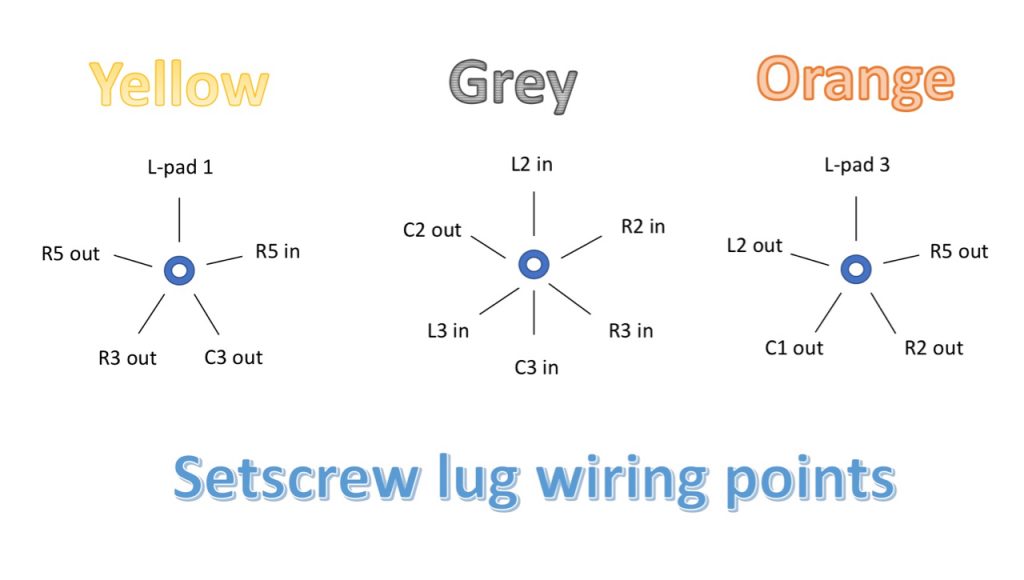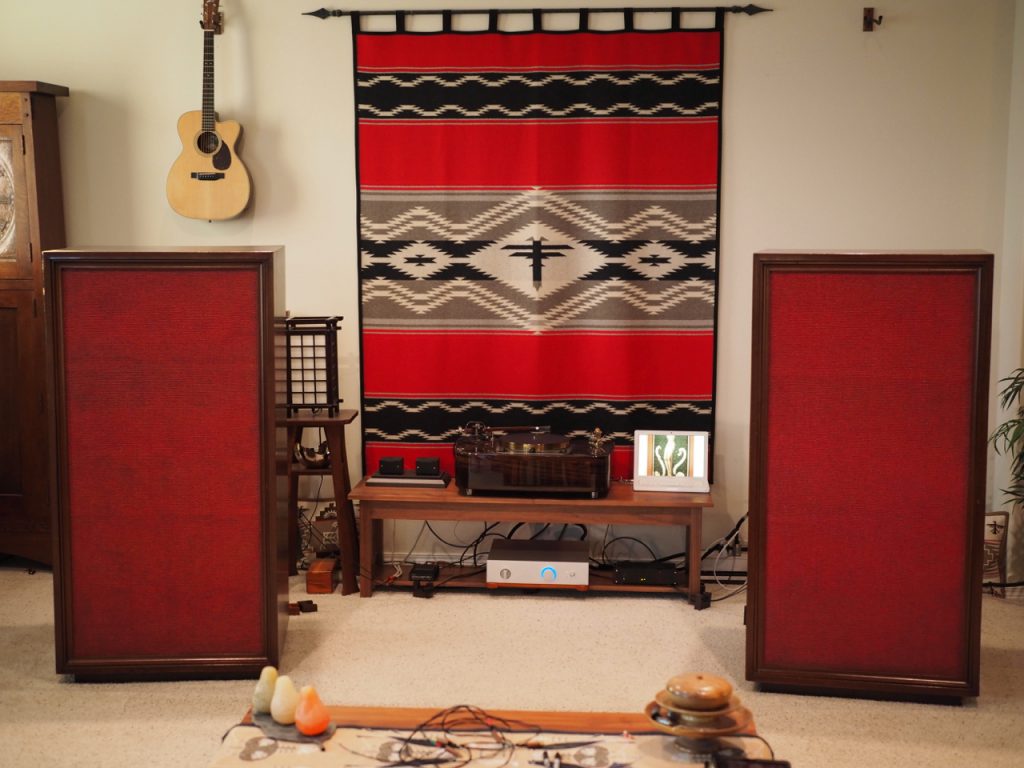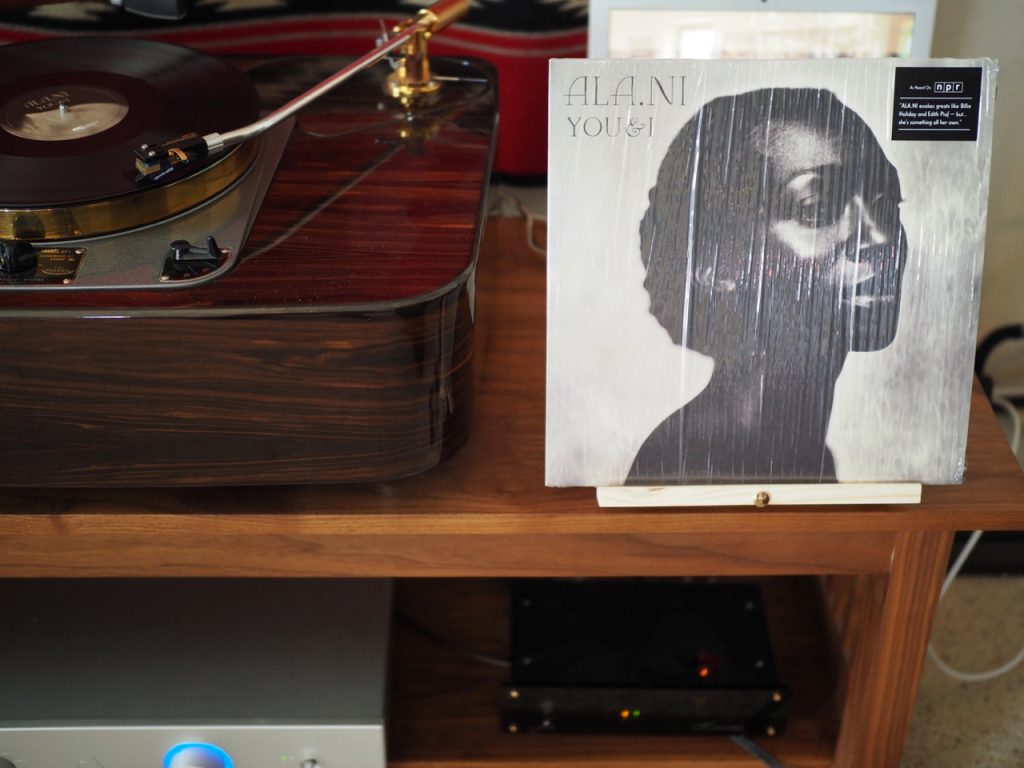I finished wiring up the Duelund CAST tinned-copper crossovers on Thursday last week, and they probably have about 12 hours of run-in time on them now.
It's probably still a little early to say too much about what to expect during the run-in process with the Duelund CAST Sn-Cu crossovers, but I thought I'd go ahead and offer a few thoughts about my perceptions at this time, as well as offer a few tips on breadboarding the crossovers.

18uF Duelund CAST Sn-Cu capacitor with DCA16GA leads.
As far as the crossover wiring goes, the Duelund CAST Sn-Cu capacitors come with DCA16GA leads, and the Duelund CAST Sn-Cu inductors & the Duelund CAST "Jeffistors" come with DCA12GA leads.

Duelund CAST Sn-Cu Air Core Inductor with DCA12GA leads.
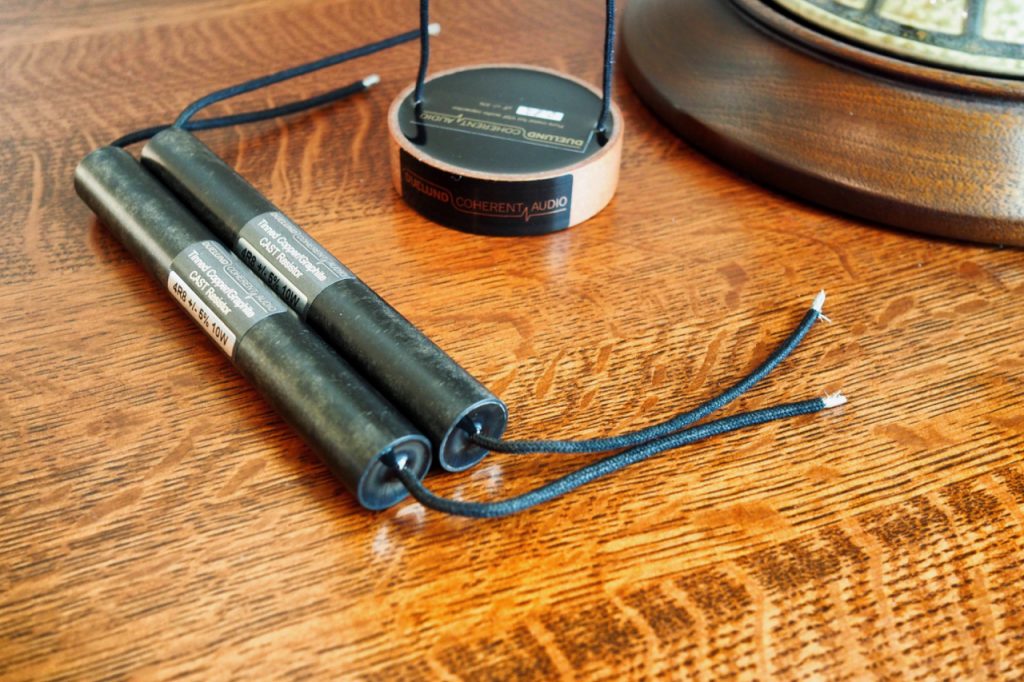
Duelund CAST "Jeffistors" with three parallel conductive elements and DCA12GA leads.
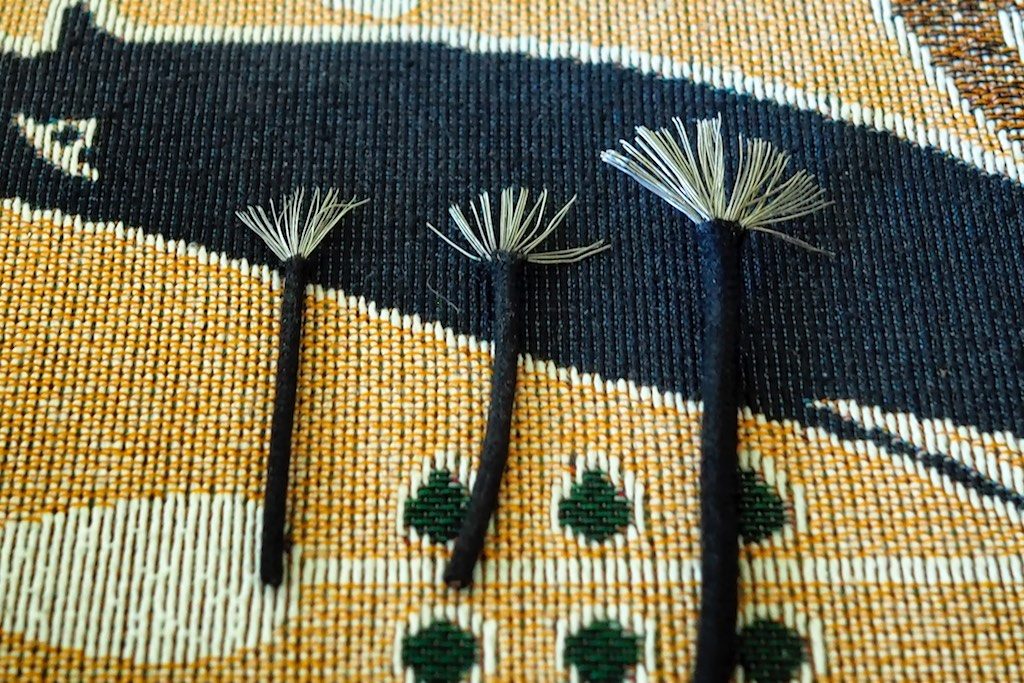
Left to right: DCA20GA, DCA16GA, and DCA12GA.
I tried to minimize wiring, so I used the leads of the Duelund CAST Sn-Cu components for direct connections wherever possible. For any internal point-to-point wiring, and for connecting the crossovers to the drivers, I'm using the Duelund DCA16GA tinned-copper wire.
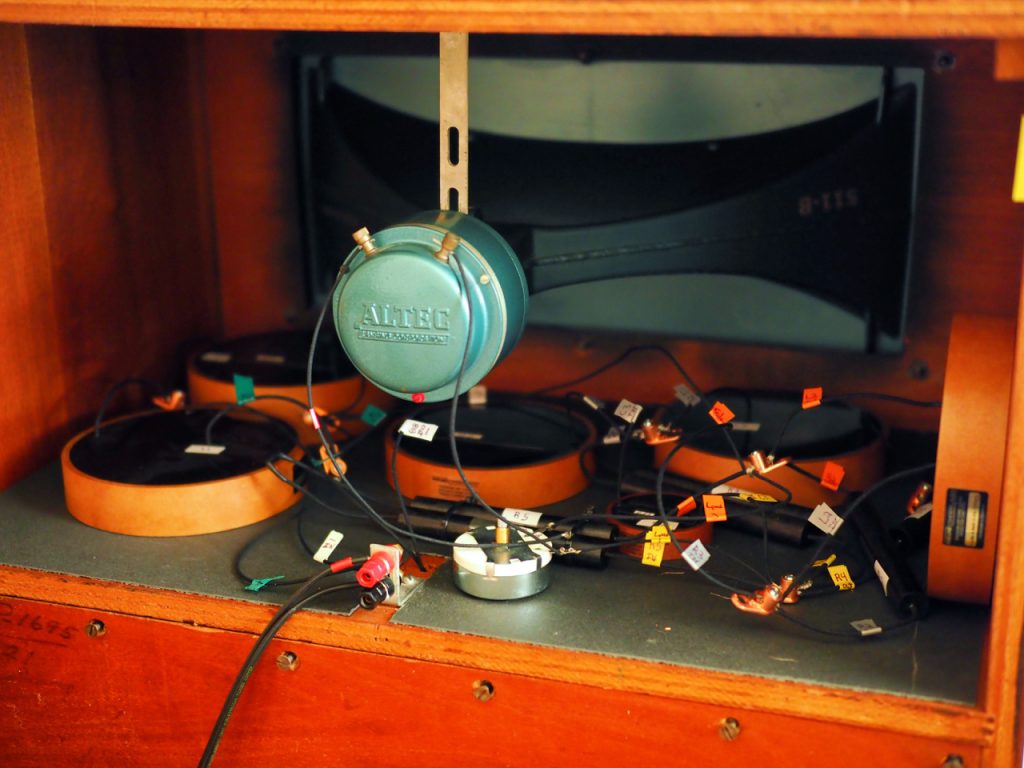
Duelund CAST Sn-Cu crossover breadboard. Duelund DCA16GA to connect the crossover to
I started with the DCA16GA because - at least as far as I can determine - the original Altec N-500-D crossover used 16 gauge tinned-copper wire to connect the drivers, so I thought that would be a good place to start.
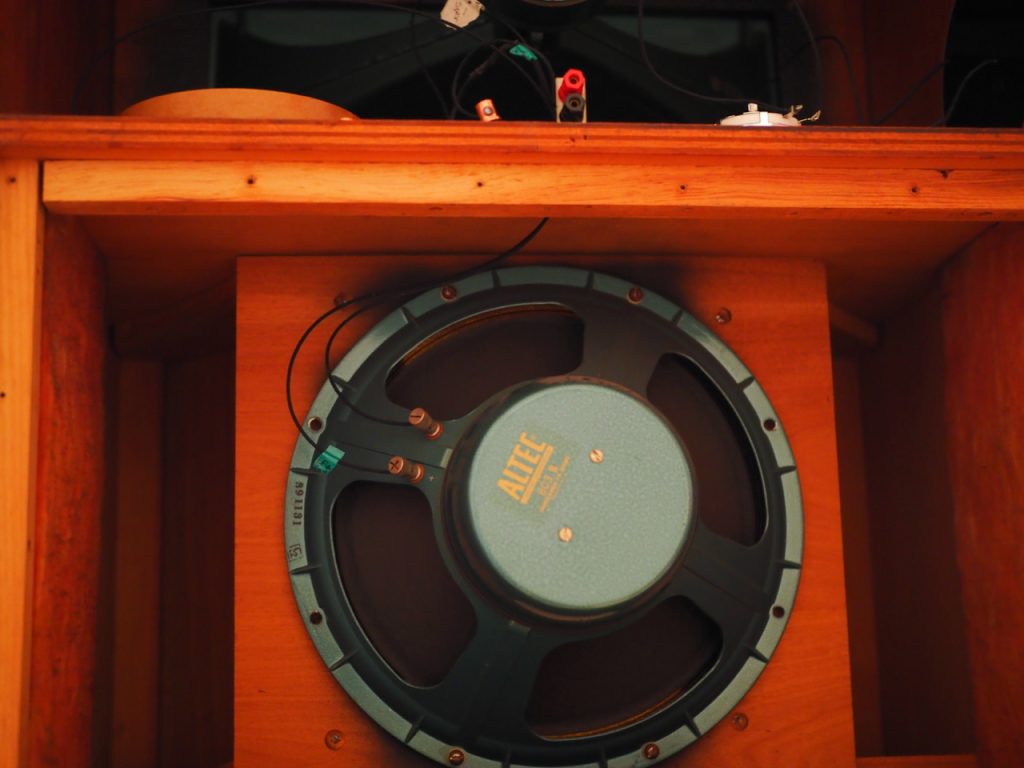
Connecting the Duelund CAST Sn-Cu crossover to the Altec 803B driver with Duelund DCA16GA Sn-Cu wire.
The result sounds so good, that at least for the moment, I've decided to leave well enough alone on the wiring front, and instead I've just focused on listening while trying to dial in the high-frequency to low-frequency balance with the L-pads.
I'm pretty happy with the high-frequency to low-frequency balance I'm hearing with the L-pads where I have them set now, but I have't measured the actual resistance of the L-pad for its current setting.
More on that later, but still, I think you'll want to be able to have an L-pad in place to get the overall balance where you want it for different rooms and listening preferences.
Once all that is sorted out there is the option of substituting a fixed resistor for the L-pad, but I don't know if I'll do that or not, as it is really nice to have some adjustability to play with.
After the crossovers get more time on them, say a 100+ hours, then I thought I might experiment a little with some different gauges of DCA Sn-Cu wire and see what happens. Perhaps DCA20GA on the Altec 804A compression drivers, and DCA12GA on the Altec 803B low-frequency drivers, for example.
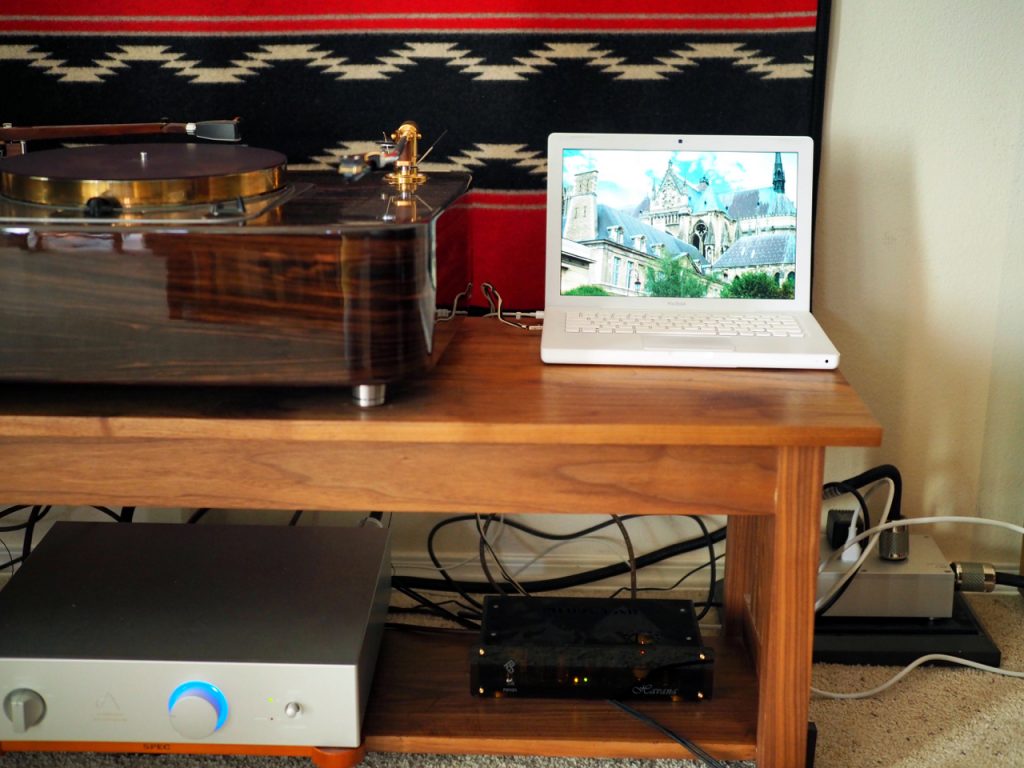
Digital front end.
To help expedite the run-in of the Duelund CAST Sn-Cu crossovers I put a temporary digital front-end into the system, consisting of a MacBook to stream Jazz24 to an Mhdt Lab Havana vacuum tube USB DAC. I'm using a DIY 22GA Art of Tone tinned-copper USB interconnect to connect the two, a pair of Belden 8402 tinned-copper microphone cable interconnects to connect the Havana to the SPEC amp, and an Acoustic Revive Power Reference TripleC NCF AC Power Cord to connect the Havana USB DAC to the AC.
It's challenging to get a lot of run-in time in a short amount of time listening only to LP's, so when I don't have a record spinning on the CTC Garrard 301, I'm streaming Jazz24 to boost the run-in hours.
With the DCA Sn-Cu wire, for example, it goes through a predictable run-in process where they initially sound a little rough, then open up and smooth out nicely with a very musical result.
I'm trying to remember for sure, but I seem to remember when I installed the prototype Duelund CAST Sn-Cu capacitors in my McIntosh MX110 preamp that they sounded great initially, and didn't really seem to change much over time.
With the crossovers, they sounded amazing on first listen, and then I started hearing some subtle roughness in the upper-midrange, but I'm not really sure if that's the components themselves getting some run-in time on them, or if it's just the DCA wiring going through it's normal progression of run-in.
I suspect as I get a little more time on the crossovers, probably somewhere in the 100 hour range, it'll be a little easier to tell about what's happening with the CAST Sn-Cu components themselves, and then I should be able to say a little more about what to expect as the components go through their run-in process.
Overall though, particularly with the short amount of run-in time on them, the Duelund CAST Sn-Cu crossovers are sounding very good indeed, astonishingly good, actually.
While breadboarding the crossover, I used Peavey microphone tape to color code the different connection points so I didn't get confused while wiring everything together.
While it isn't immediately obvious from the schematic, the HF crossover circuit connections primarily converge at 3 McMaster-Carr setscrew lug points (above), which I color coded as yellow, grey, and orange.
If the combination of leads being connected were too big to fit into one lug connection, then I used two, with a jumper between them, to more easily accomodate connecting all the wires.

Duelund CAST Sn-Cu crossover breadboard with Peavey microphone tape color coded connections.
The breadboarded Duelund CAST crossovers look a little chaotic at the moment, with the wires connecting everything together in a practical manner.
The cave-like darkness of the HF horn cabinets makes it challenging to get detailed clean photos, but hopefully you get the idea.
After I get a good amount of time on the Duelund CAST Sn-Cu breadboarded crossovers, say 100 - 300 hours, and get the final wiring gauges selected, then I'm going to start thinking more seriously about a final crossover design that shows off the Duelund CAST Sn-Cu components a little better.
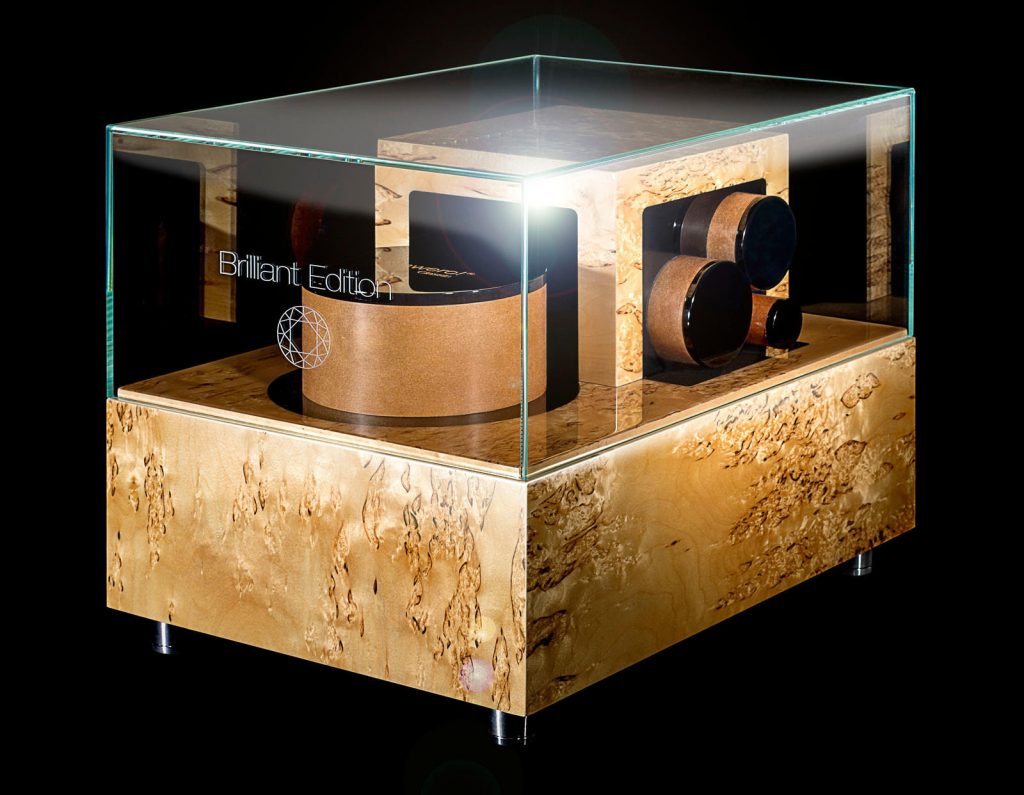
Rainer Weber's Duelund CAST crossover - stunning! Photo courtesy of the Duelund & Mundorf Fanatics Facebook page.
The Duelund CAST Sn-Cu components are so gorgeous to see I'm leaning towards outboard crossovers that I can put next to or behind the loudspeakers for a little more visual appeal.
Rainer Weber's Duelund CAST crossovers are the most visually stunning design I've ever seen for an outboard crossover, and is a real inspiration for me.

Photo courtesy of the Duelund & Mundorf Fanatics Facebook page.
I also find the crossover above an incredible looking bit of crossover artwork, and am thinking these are the sort of designs I'd like to have for the Duelund-Altec Project CAST Sn-Cu crossovers.
I'm going to have to do a little bit of 3D thinking on how to lay out the Duelund-Altec Project crossovers in a similar sort of design.
This morning I've been having fun streaming Jazz24, and I just put on the Ala.ni You & I album, which sounds absolutely gorgeous over the "Stokowski" Altec's with their new Duelund-Altec Project CAST Sn-Cu crossovers.
The overall tone, image presence, and dynamic contrasts the Duelund-Altec Project CAST Sn-Cu crossovers are capable of is really impressive.
I'm finding it a little bit challenging to describe what I'm hearing with the Duelund CAST Sn-Cu crossovers in place on the Altec's, because it's really breaking new ground in performance it's very enchanting and captivating to hear music - like Ala.ni's You & I - being played, but after I get a better feel of how to articulate what I'm hearing, I'll tell you more.
Ok, that's all for now.
As always, thanks for stopping by, and may the tone be with you!







